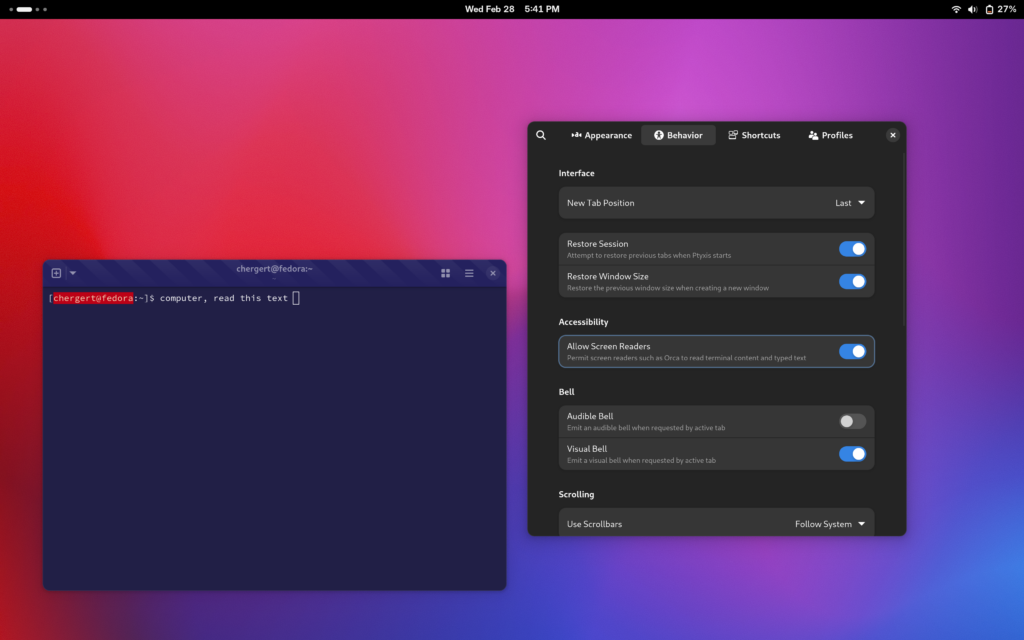First off, what the heck is Ptyxis?
Ptyxis is the new name of what was formerly Prompt. The extremely nice people at Panic let me know they had a product that might be confused with Prompt and I agreed it could be confusing. Thankfully, their office is a few miles from me in Portland so I had a chance to meet the team face to face!
We found a lot to talk about, especially when it comes to text rendering with the GPU and people getting aggressive over their beloved fonts.
Hopefully, you like the new name. If not, feel comfort knowing that the desktop spec has support for GenericName and Keywords allowing you to type whatever you like to find the application.
In the North, Spring is about to burst which is a great reason to learn what Ptyxis is. You can even find a beautiful example of it on the cover of The Linux Programming Interface which if you’re into terminals and Linux you should already own.
Now, the new bit.
Accessibility is super important for many reasons I shouldn’t need to repeat.
I put together an implementation of the new GtkAccessibleText for VteTerminal and am bundling it with Ptyxis to get more testing.
Since this has the potential to really overload the screen reader as the final interfaces are figured out, it’s gated behind a toggle in preferences. I also am hesitant to enable it by default until we have a way in the a11y stack to be extremely lazy about initialization. I don’t want to waste a lot of CPU cycles tracking changes only for them to be sent to an accessibility D-Bus where nobody is listening.
Hopefully this is one less thing preventing Linux distributions from shipping a GTK 4 based terminal emulator by default.

